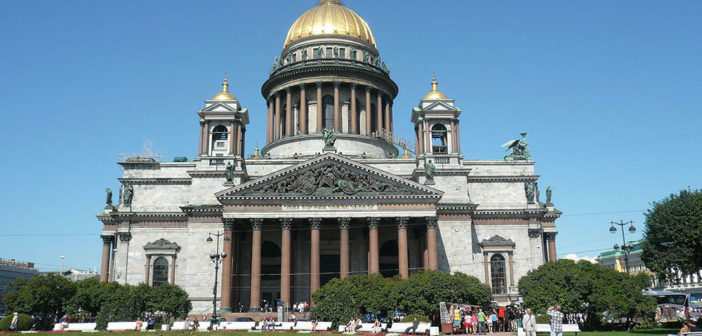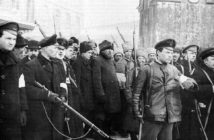Petropavlovsky cathedral
On May 16 (27) 1703, on the Hare’s island a fortress called St Petersburg was founded by Peter I. That day of the Holy Trinity came into history as its birthday. On June 1703 the wooden church was put on the grounds of the fortress named after Saint Apostles Peter and Paul. In 1714 a stone cathedral was founded in the fortress to the design of architect Domenico Trezzini. On June 28 1733 it was sanctified.

The construction of the Peter and Paul Cathedral
Near St Peter and Paul’s fortress, on Birch Island (now Petrogradsky), the oldest square of the city appeared. It got its name because of the wooden Holy Trinity Church built on October 1703. In the early years of the 18th century the square was the administrative, trade and cultural center. Later the church was reconstructed in stone, in 1913 suffered from fire and in 1929 was pulled down. In 1710 Peter I ordered to construct the monastery in the name of the Holy Trinity and Saint Alexander Nevsky on the place where the Chernaya River (now Monastyrka) empties into the Neva.
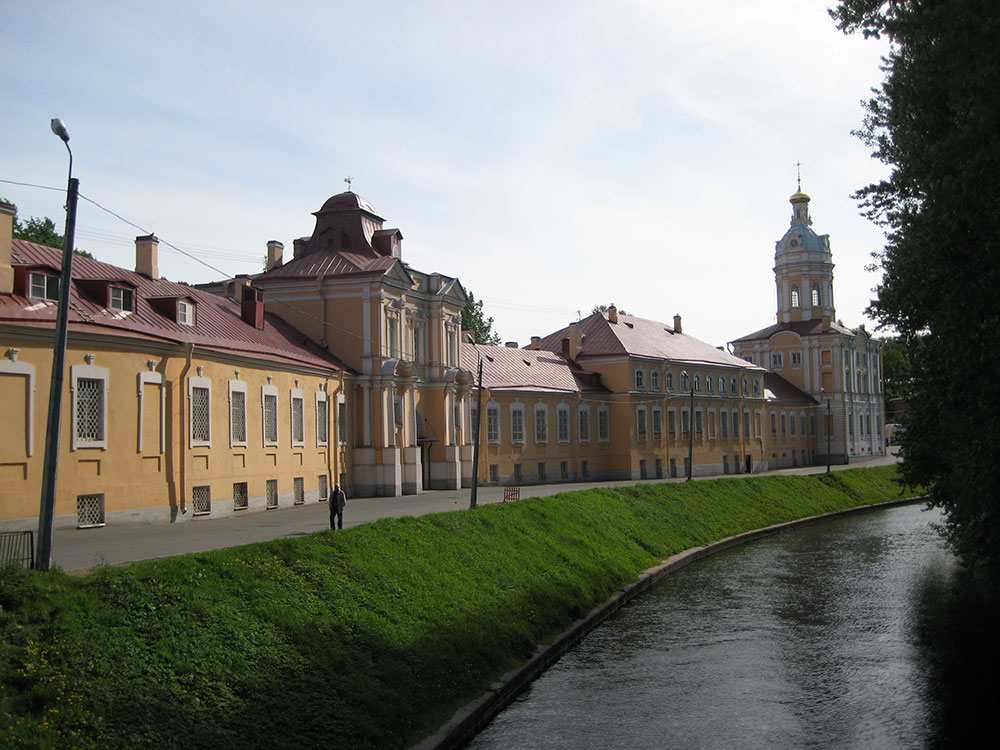
Svyato-Troitskaya Alexander Nevsky Lavra
In 1724 the relics of Alexander Nevsky were transferred from Vladimir to St Petersburg. The monastery complex includes the Annunciation Church by D. Trezzini (1722), St. Theodor’s (Alexander Nevsky’s brother) Church to the design of P. Trezzini (1745-1750), the Metropolitan’s House, the Seminary and the Host Blocks constructed by Rastorguyev (1755-1771). The dominant of the monastery is the Holy Trinity Cathedral designed by Starov in Classicism (1776-1790).
By early 19th century the monastery had been turned into a leading center of education and culture Russia with historical archives, library and the Clerical Academy, the higher educational establishment of the Moscow Patriarchy.
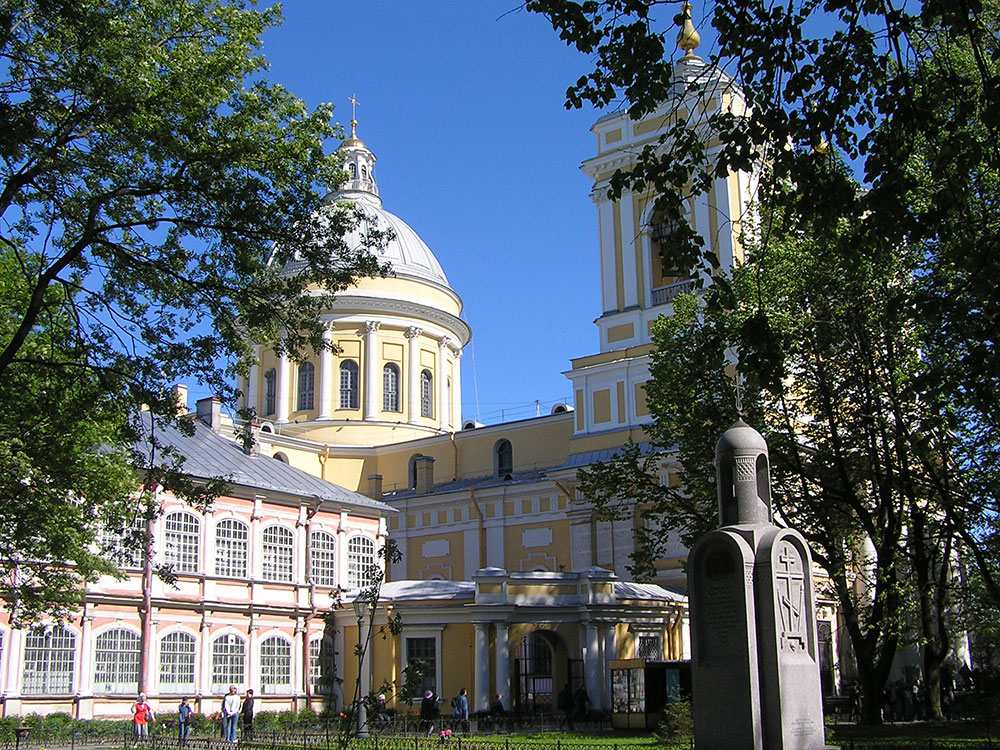
The cemetery of the Alexander Nevsky monastery
In 1797 the Alexander Nevsky Monastery was attributed rank of a Laura given to the monasteries held the most important position (before the revolution there were four lauras in Russia). Within the Monastery several cemeteries were formed.
The oldest St. Lazarus’ Cemetery is the burial place of outstanding statesmen, scientists and writers- M. Lomonosov and D. Fonvisin. The second one is the Tikhvinskoye Cemetery. There are graves of famous Russian poets and writers I. Karamzin, I Krylov, V. Zhukovsky, F. Dostoyevsky; composers M. Glinka, M. Musorgsky, N. Rimsky-Korsakov, P. Chaikovsky; many prominent painters, architects, sculptors, actors. The third cemetery is St. Nicholas’ where A. Sobchak is buried.
After the October Revolution the laura was closed. For the last years there has started a gradual return of buildings and church utensils to the Russian Orthodox Church.
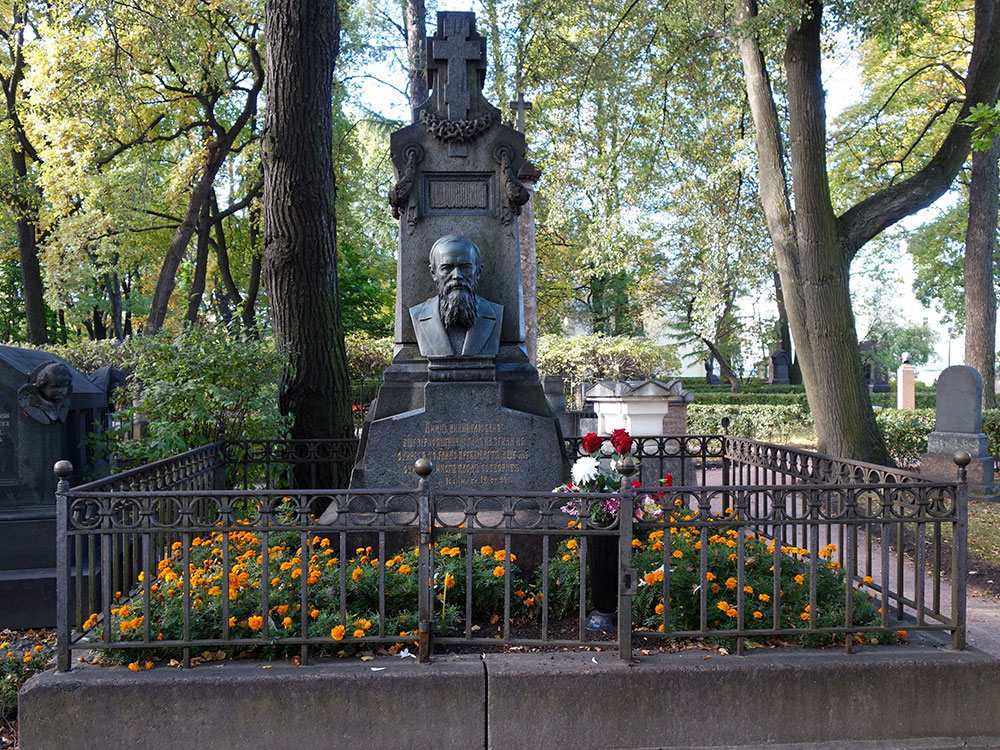
Sampsonievsky Cathedral
Among the first temples of St. Petersburg there was St. Sampson’s Cathedral at the Vyborg Side. It was designed by unknown master in Old Russian architectural traditions near the place where the wooden church founded by Peter I in the memory of Poltava Battle over Sweden on June 27, 1709. (1728-1740).
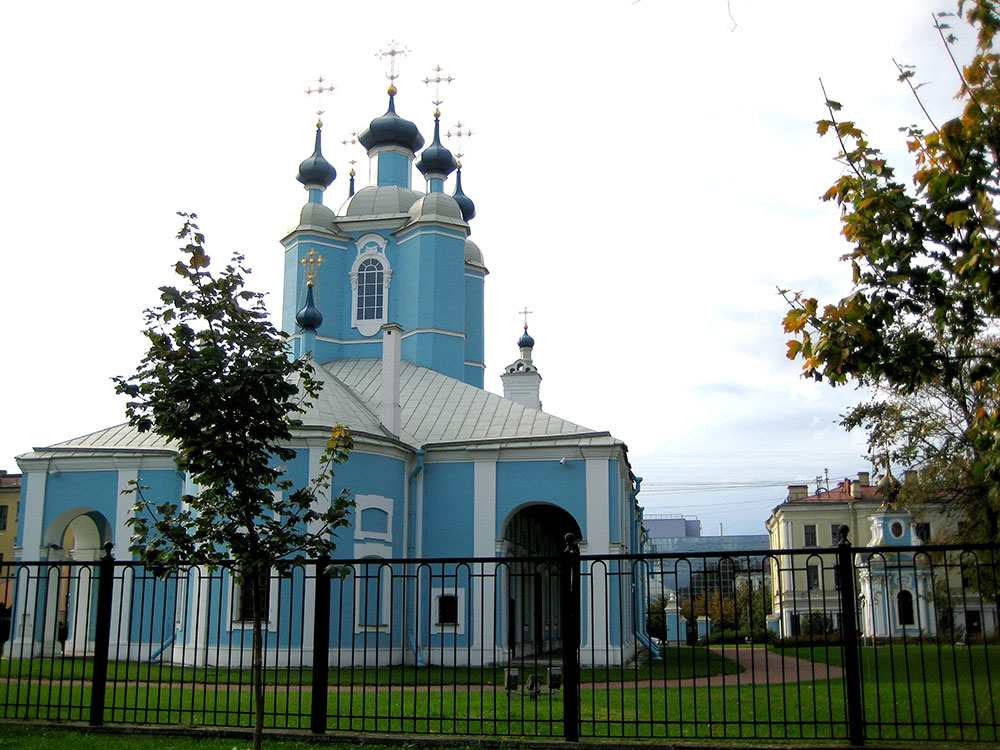
Voskresensky Novodevichy convent
The city mid-18th-century development was marked with the construction of several large buildings. Created in elaborate Baroque forms, they changed the outlook of the capital. The ensemble of the Resurrection New Maiden Convent is one of the best creations of B.-F. Rastrelli.
It was started in 1748 and finished after Rastrelli’s death in 1769. The convent put on the place near the Tar Yard soon was called the Smolny (Tar). Architect Stasov finished the Resurrection Cathedral only in 1832-1835. After consecration it was named as the Cathedral of All Educational Establishments. After the Revolution the cathedral was closed, the inner decoration was broken; it was turned into a storehouse. In 1990 the Concert and Exhibition complex was opened in it.
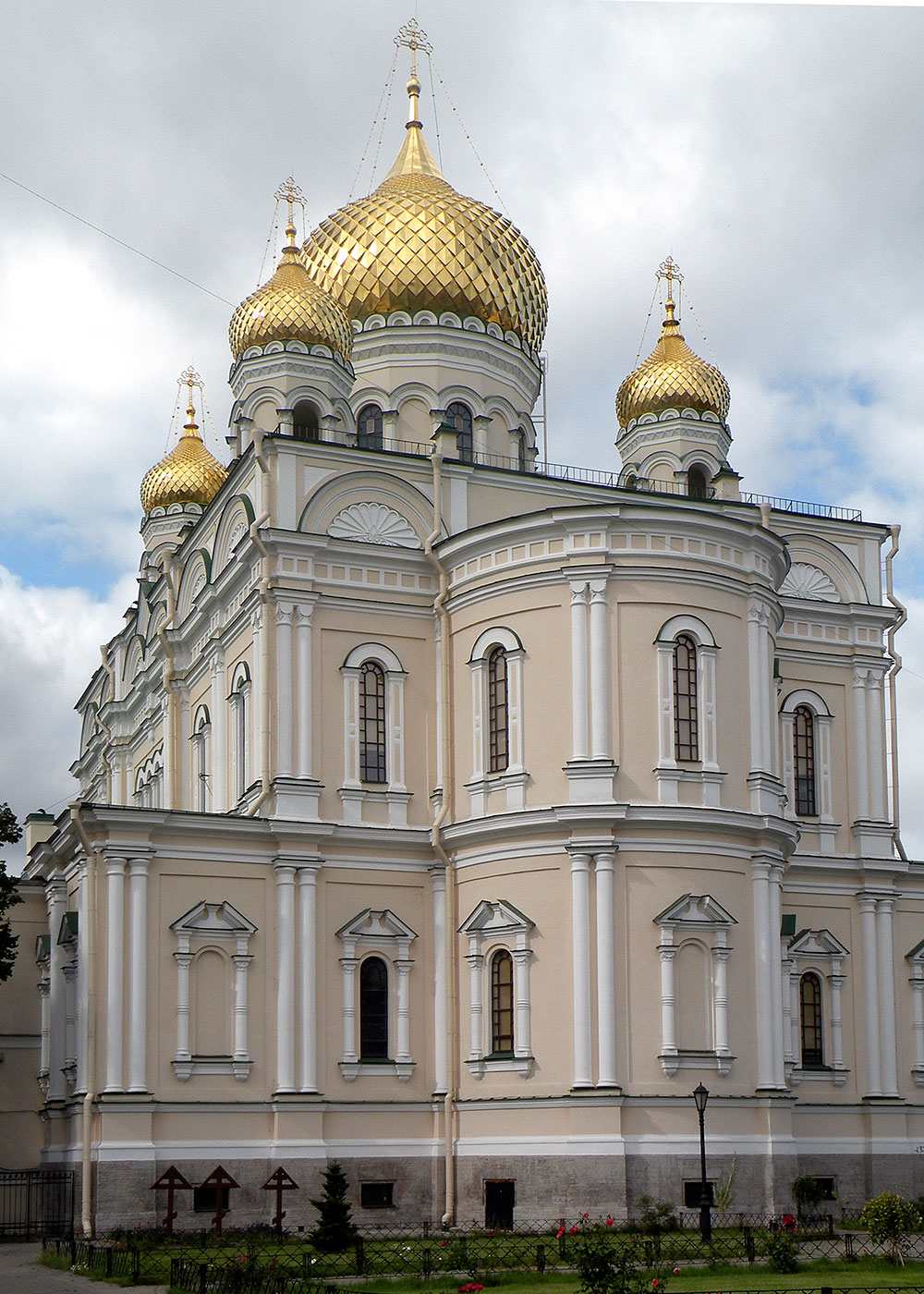
The Epiphany Cathedral Of St. Nicholas
Another attractive church in St. Petersburg is the Epiphany St. Nicholas’ Cathedral built by architect S. Chevakinsky in 1753-1762. The cathedral is divided into two churches, the lower and the upper ones. The elegant four-tier bell-tower was built nearby at the Kryukov Canal Embankment (1756-1758).
Prince Vladimir Cathedral
From 1760ies a new period in the development of St. Petersburg architecture started. Austere and simple Classicism replaced festive Baroque. Large and impressive buildings appeared in every part of the city. This feature displayed itself in the construction of St. Prince Vladimir’s Cathedral at Petrogradskaya side.
The works started in 1741, then they were stopped. It was decided to put a church of five cupolas to the ancient Russian custom instead of a single-dome building. In 1766 Rinaldi’s design was improved and the erection was renewed but the fire that happened in 1772 caused considerable damages and interrupted the works for a long time. It was only in 1782 that the construction was continued under the supervision of architect Starov.
In 1789 the cathedral was consecrated.
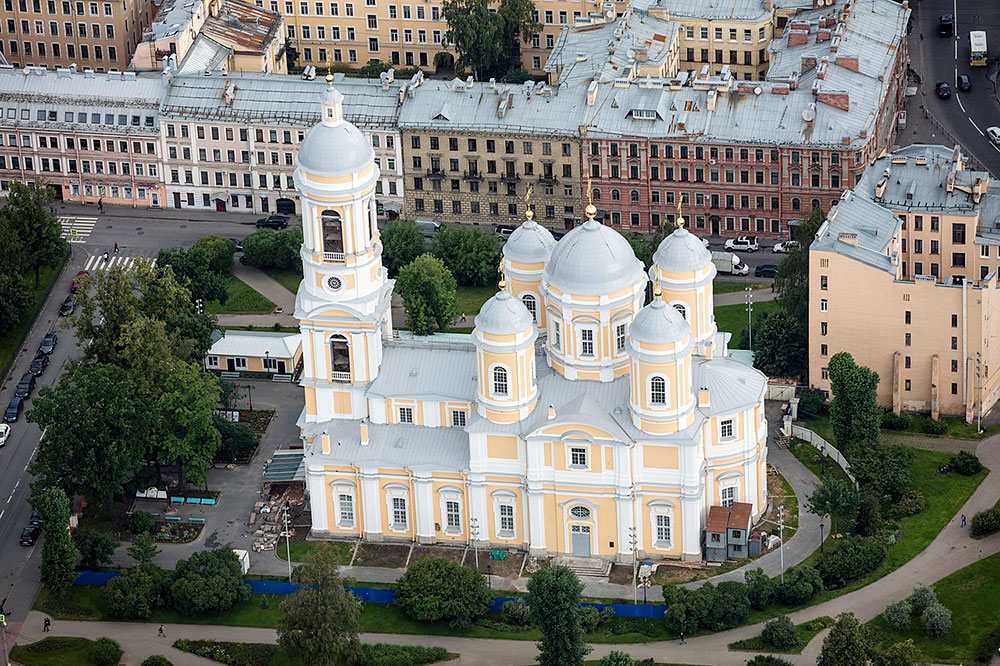
Church cathedrals of other religions in Saint Petersburg
The Roman Catholic Church of St. Catherine built on Nevsky Prospect was among the largest temples. The construction was started in 1762 by Vallin de la Mothe and finished by architect Rinaldi in 1783.
On the same side of Nevsky Prospect there is the Armenian Church of St Catherine by Felten in 1771-1780, the Lutheran Church of St. Peter and Paul by Al. Bryullov (1832-1838), St. Mary’s Finnish Reformation Church by Paulsen (1803-1805) in Bolshaya Konyushennaya Street. Today these are functional churches.
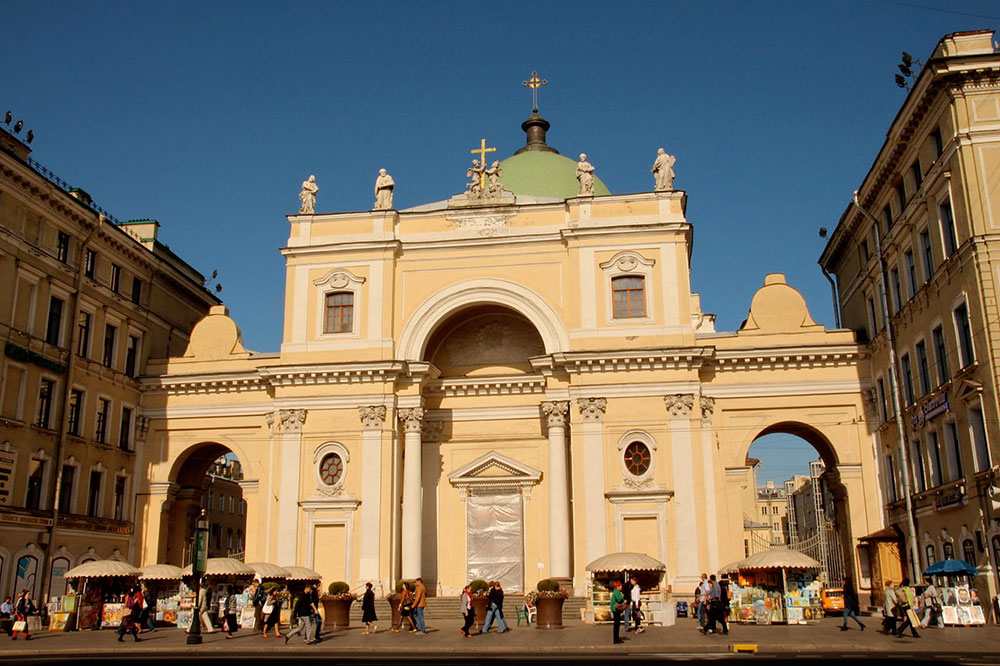
The Cathedral of the Kazan icon of the Mother of God
Early 19th century was marked in St .Petersburg with the construction of several magnificent cathedrals, which became important architectural dominants of the city. The Cathedral of Our Lady of Kazan by Voronikhin (1801-1811), reconstruction of the Cathedral of Our Saviour’s Transfiguration (burnt in 1825) by Stasov (1827-1829). It was the first military church devoted to the first Guards Regiment formed in 1687 by Peter I. The name of Stasov is connected with the creation of the Holy Trinity Cathedral behind the Fontanka River in the settlement of the Izmailovsky Regiment (1828-1835).
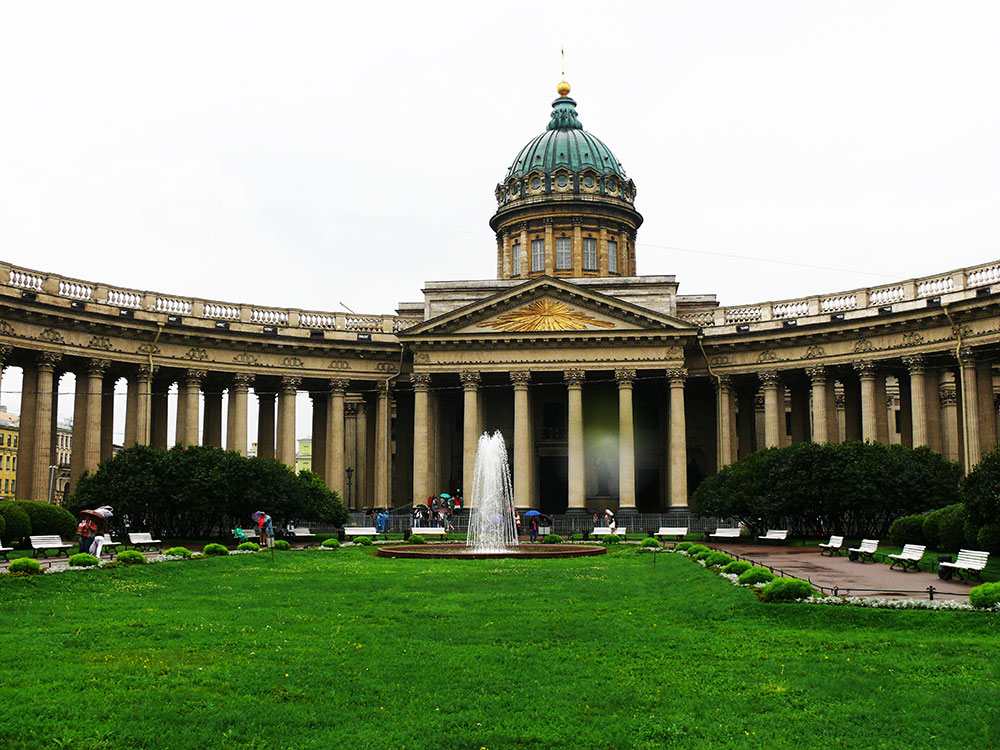
Isaakievsky cathedral
By mid-19th century Classicism was replaced by eclecticism and stylization based on various architectural forms of the past. It was reflected in the construction of the church buildings of that period.
The most important construction of the mid –19th century was the creation of an impressive new St. Isaac’s Cathedral to the design of A. Montferrand. It took forty years to complete the works from 1818 to 1858. At the same time the so-called Russian-Byzantine style was coming into force. Its representatives revealed the church construction in ancient and medieval forms.
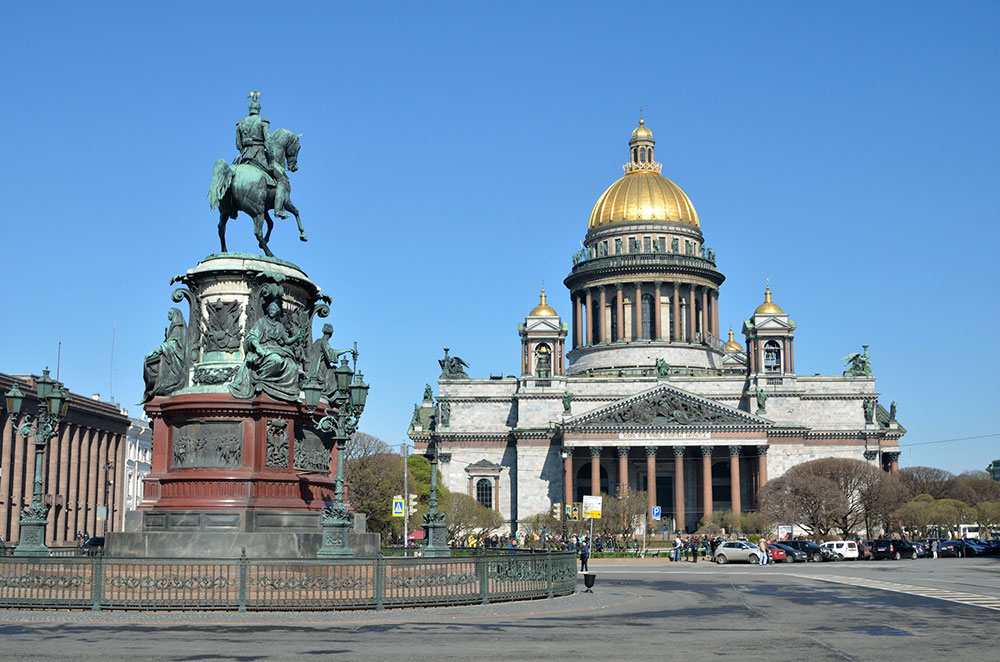
Church Of The Resurrection
The best sample of the neo-Russian style is the Church of the Resurrection of Christ or Our Saviour’s on the Spilled Blood by architect A.Parland and Archimandrite Ignatius (I.V. Malyshev) in 1883-1907. The example of the neo-Byzantine architecture is the Naval Cathedral built in 1902-1913 in Kronstadt by V. Kosyakov.
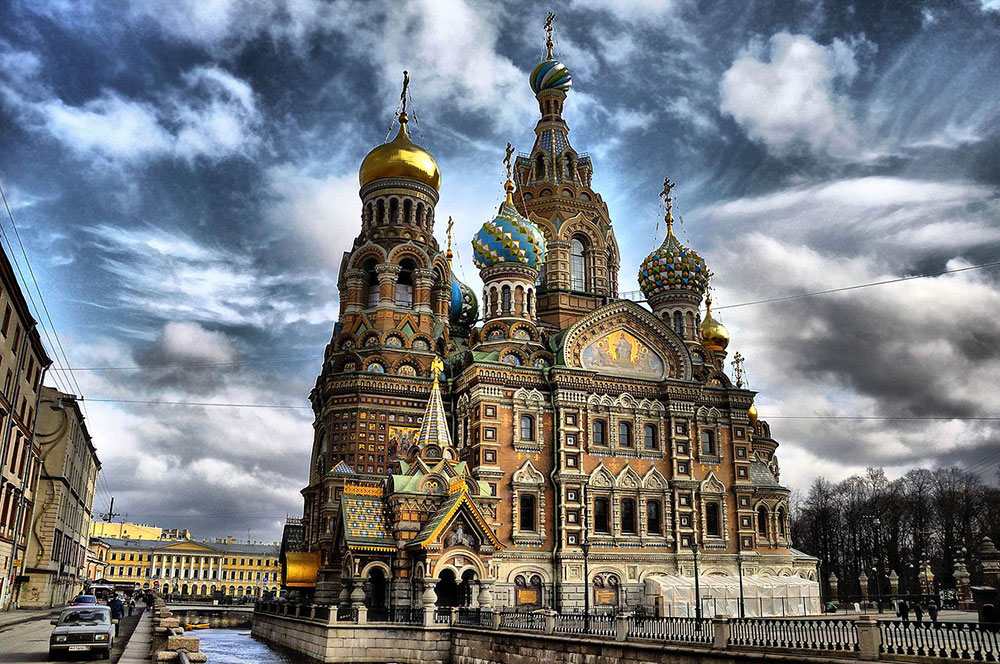
Grand choral synagogue
At the turn of the 19th-20th centuries the temples of different religious communions were erected in St. Petersburg. The Jewish population numbered over 25 thousand people and the communion was one of the largest. In 1893 in Bolshaya Masterskaya Street (now Lermontovsky Prospect) the Big Choral Synagogue was put up to the project of architects I.I. Shaposhnikov, L.I. Bakhman, A.V. Malov.
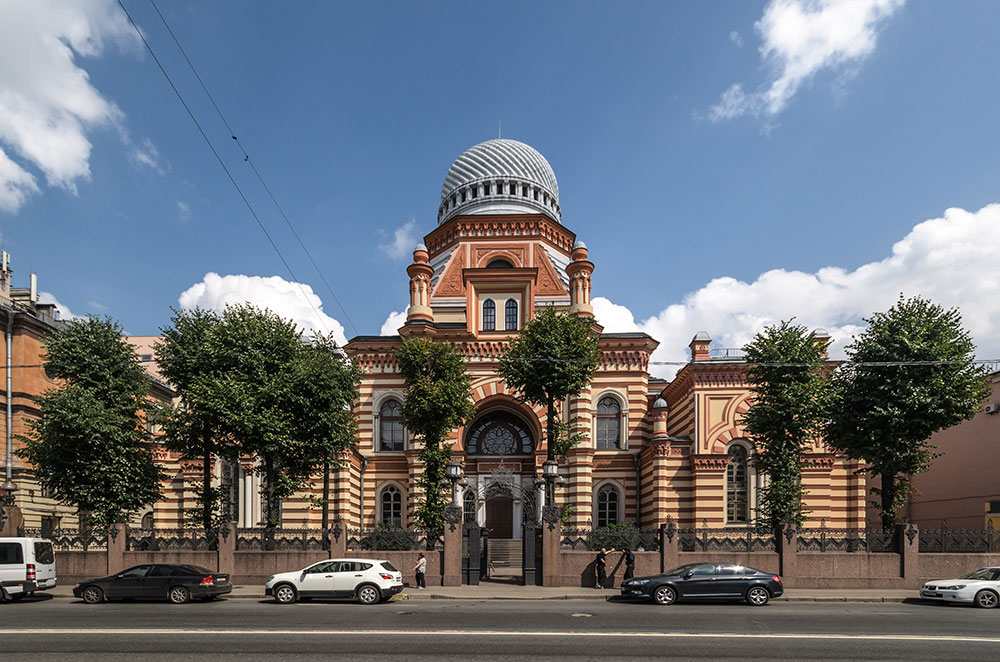
A Muslim mosque and a Buddhist temple
The Moslem religious communion was smaller. Its center became the Mosque built in 1910-1914 by architects N.V. Vasilyev, S.S. Krichinsky, A.I. Gauguin at the Petrogradskaya Side, near Troitsky Bridge. The Synagogue and Mosque have been active temples since the opening. To the initiative and with the support of the Dalai Lama architect G.V. Baranovsky constructed the Buddhist temple in Staraya Derevnya in 1909-1915. In 1990 the building was returned to the St. Petersburg Buddhist communion.

Churches and temples of different religions in Saint Petersburg
By the early 20th century St. Petersburg became one of the grandeur European capitals. Splendid architectural ensembles, gorgeous palaces, austere embankments, marvelous gardens, numerous bridges and, of course, various cathedrals, churches and temples of different confessions formed the unforgettable and unique view of St. Petersburg.






